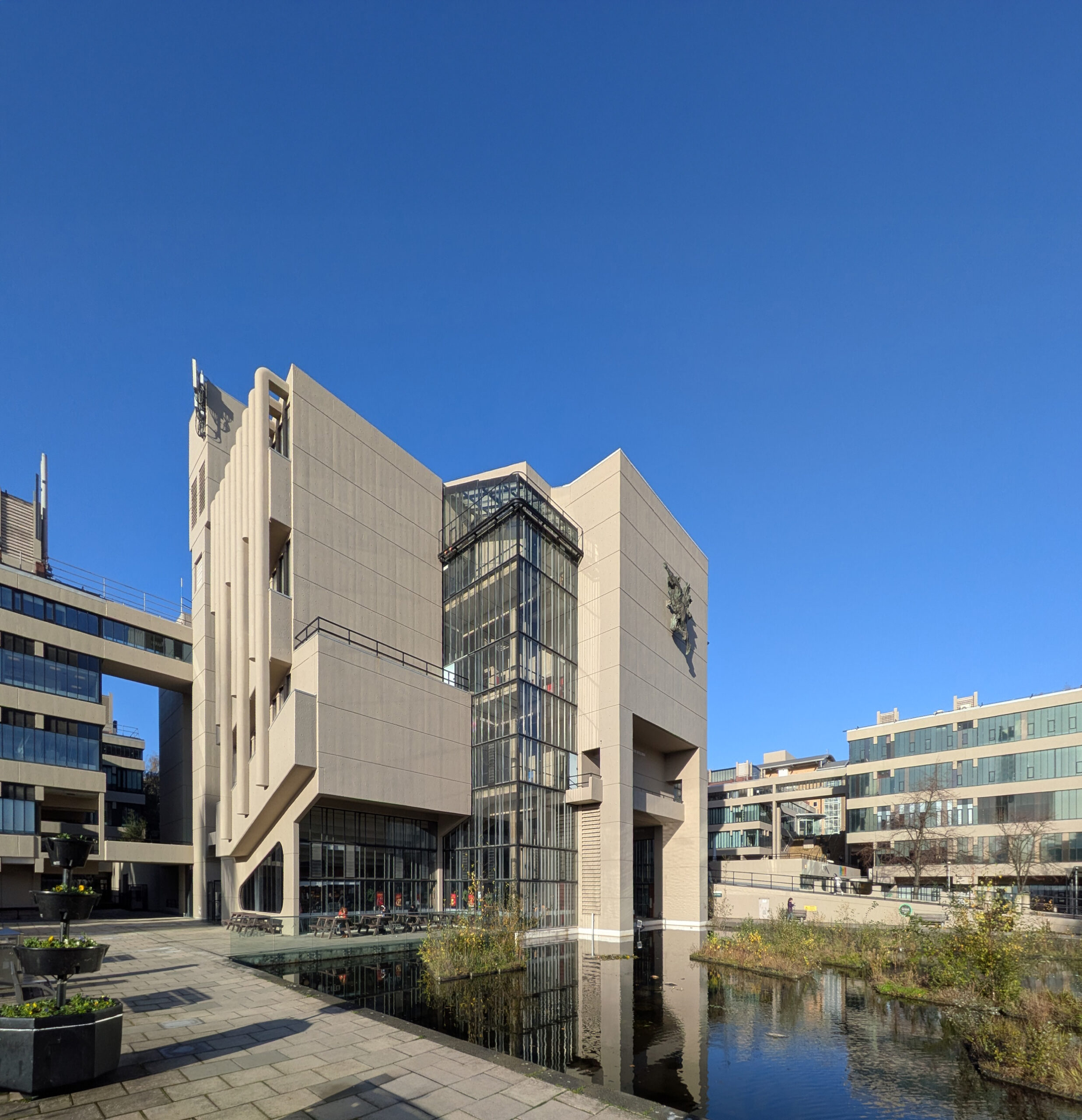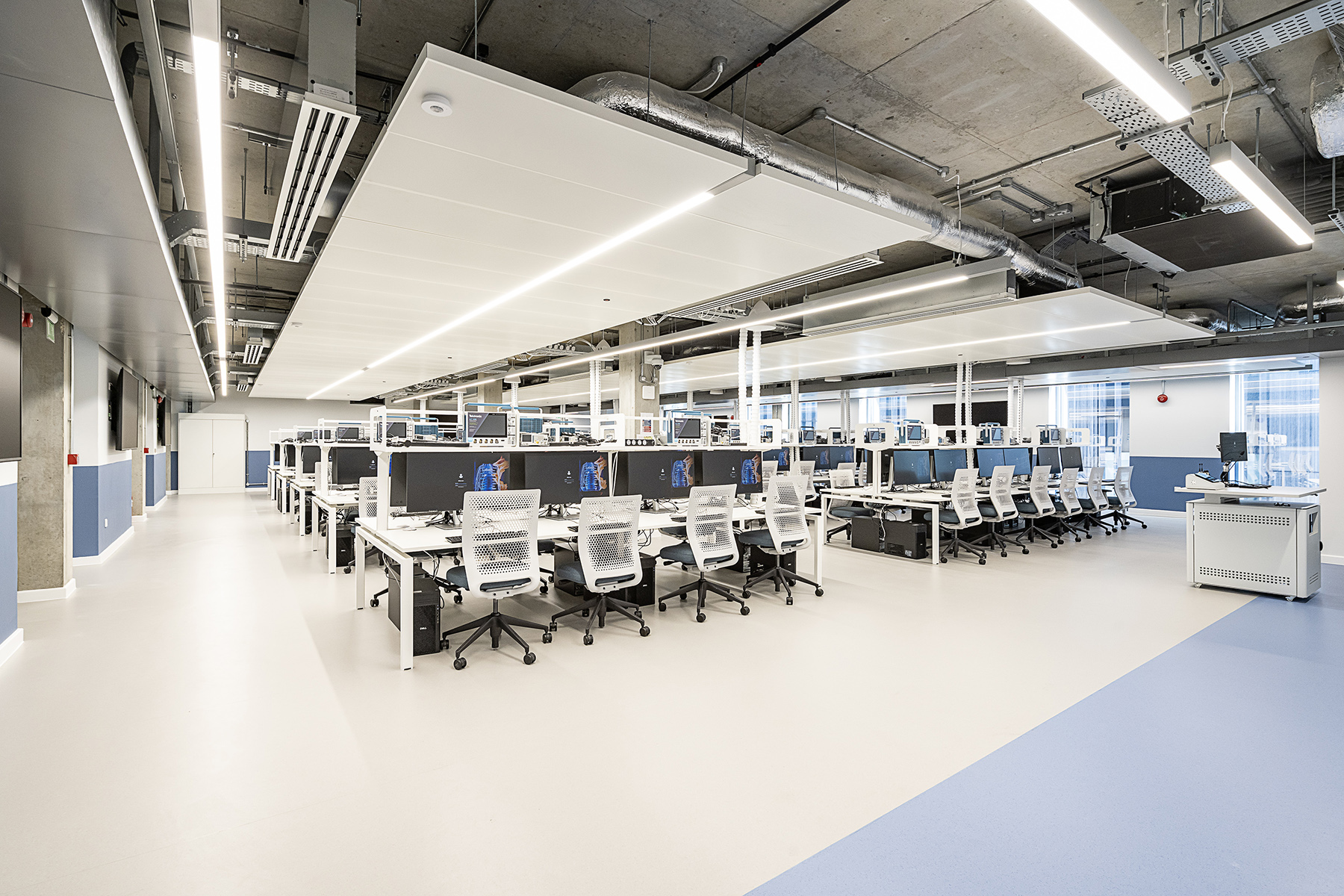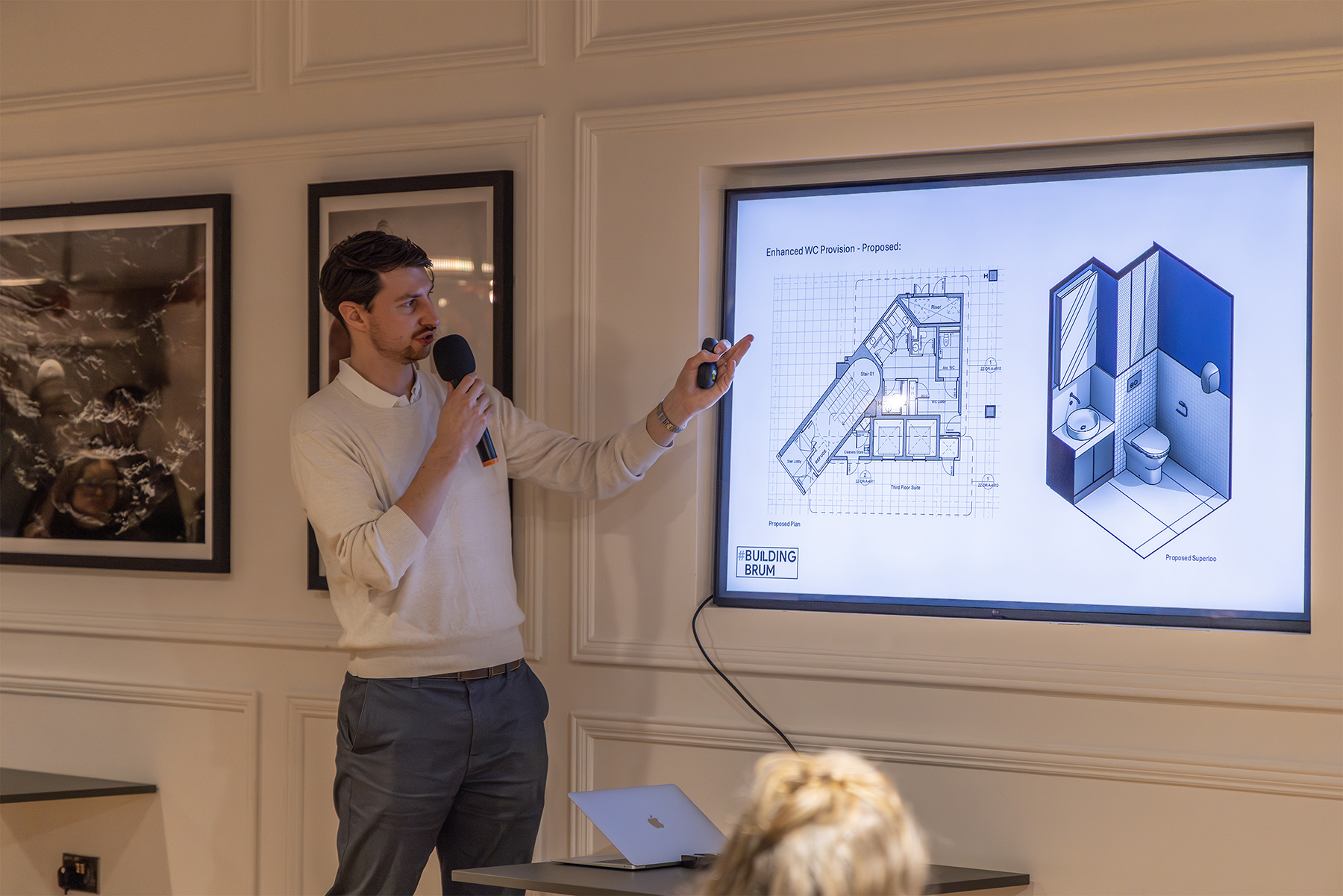The University of Wolverhampton’s £51 million School of Architecture and the Built Environment (SoABE) is a 7,500sq.m teaching and learning facility intended to have extended working hours to cater for all activities to be held within it, including professional and industry training. It will provide space for over 1,200 students made up of undergraduate, postgraduate and professional learners, as well as a staff of educational and research professionals. We have been on-site at the former Springfield Brewery in Wolverhampton since October 2018 and we are happy to share an update and some images from the current phase of construction and repair.
New section:
The steel frame is now complete and rises three storeys to the outline of the saw-tooth roof that will echo the industrial form of surviving buildings on the site that were once part of the Brewery complex. All the floors are in and the Metsec frame is currently progressing. This new section of the design will house a variety of teaching and learning spaces including three large studios and a single ‘superstudio’ space for the entire length of the building as well as a suite of state-of-the-art laboratory and workshop spaces robustly designed to remain flexible and resilient to future aspirations. The ground floor slab is currently being poured and we expect the curtain walling to get underway in a month
Heritage work:
The repair and rebuild work is making excellent progress and the retention of as much of the existing heritage structure as is possible is something that has always been a fundamental part of the design of this project. The new floors for the existing structures have also been poured and we await delivery of the new clock for the clock tower. The clock is being designed by Clock Tower People and we can’t wait to have this particular showpiece ready and restoring this heritage tower to its former glory.
In the next few weeks the steel for the new roof is due to be craned in – something which everyone looks forward is heritage buildings having a roof for the first time in a number of years. Internally the heritage buildings will feature an atrium generated from the existing courtyard from the 1892 complex which was lost with the development of the site through the years. This space will provide a social heart to the building, offering exhibition areas, a café and shared learning space. It will also draw students approaching from the different entrances into a unifying central space.





















